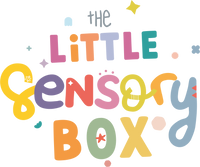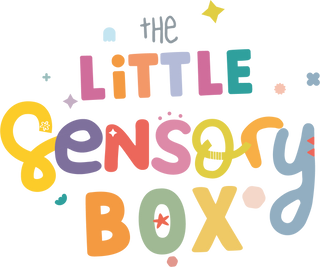
Small World Play - Guest Blog by Emily Ashworth
I’ve always enjoyed playing with Ellie and her toys, but from about 9 months I realised that Ellie needed something more engaging to play with other than her usual baby toys. I was on maternity leave in lockdown 1 (in the U.K.) when I first started trying small world set-ups with Ellie. My Mum worked in Early Years and was a Primary school teacher before she retired and she encourage me to start theming our play around stories and rhymes.
What is small world play?
Small world play is creating a real scene for children to play with, such as a farm or jungle. This acts as an open invitation to play allowing children to act out stories or scenes.
How do I set up a small world tray?
Many of the small world set-ups you see on Instagram are elaborate with carefully crafted wooden toys and beautifully painted bases, but none of this is necessary and can easily be done with pieces you have around your home.
A standard small world set up requires a base, scenery and characters.
A base can be sensory, such as blended cereal, beans, dyed rice or chickpeas, or it can be something as simple as a sheet (I’ve tie dyed some of ours!), a sensory scarf or even just some coloured paper. When Ellie was younger I used to use shredded paper and sensory scarves as these were safest for little exploring hands and mouths! Now she is older I try to use a bit more elaborate bases that she can explore on her own.


These were the first two small world trays I made!
The scenery you use is obviously dependent on what small world you are trying to set up, however, if you are going to be doing small world on a regular basis I would recommend investing in some sturdier pieces such as the Tickit Trees. I often use bits from our garden such as pebbles or twigs to bulk out my trays if needed. If I find I am missing any pieces then I try to use packaging to make it. For example, recently I wanted some Savannah trees for a backdrop so I drew and painted them to stick to the back of my tray. Other examples to use in scenery include felt balls, felt sheets for lakes and ponds, packing peanuts for snow or to build an igloo.

This is a more recent tray – I used sand from Ellie’s sandpit in the garden and some pebbles for scenery.

For this “Three Little Pigs” tray I made the house of sticks and house of straw myself – the bricks are just Jenga blocks!
Finally, you need to select which characters to use for your small world tray. Personally, I suggest investing in some wooden animal figures if you are going to use them often, such as the tenderleaf toy animals. These will grow with your child and get used outside of your small world tray. Alternatively you can make any pieces you are missing either from packaging, or by painting your own peg dolls. If you have older children you could encourage them to make pieces from air dry clay or salt dough to use.
For this tray I obviously didn’t want to buy 10 rubber ducks! I made the boat, compass and rubber ducks from carboard. I’ve saved all these for future trays. The rubber ducks we have used again for singing “5 little ducks went swimming one day”.

In summary, my advice for anyone who is trying you do small world play with their children is:
-Don’t panic if you don’t have all the correct or matching pieces, your child won’t notice
-Try not to make the tray too busy, this allows the imagination to flow
-Link it to a book or story to give the children ideas on how to play
-Sit down with your child and show them how to play before giving them some independent time if they don’t seem focussed.
Emily Ashworth - @howweplayed2day


